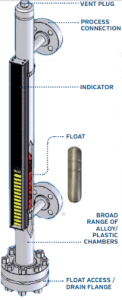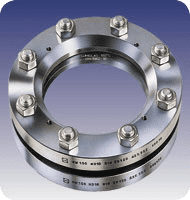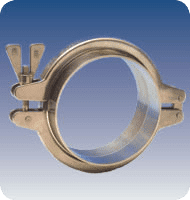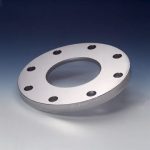Surface Finish and 3-D Printing Are Big Topics at Recent BPE Meetings
Posted on July 30, 2018 by LJ StarAarash Navabi, CPIP, Director of Research + Development, Research Dynamics, Massachusetts Division of L.J. Star, participates on several critical ASME Bioprocessing Equipment (BPE) Committees, the Surface Finish Subcommittee, the Polymers Subcommittee and is leading another Task Group for BPE. At meetings held in San Diego, California in May 2018, Aarash reported on a variety of committee discussions and decisions that drive the processing industry.
I belong to the Surface Finish (SF) Subcommittee and I am the SF liaison to the Polymers Subcommittee. Although there has been no major activity between the Surface Finish and Polymers subcommittees, there’s potential to form a Task Group related to the surface finish of polymers and their requirements. At this time, SF is only applicable to the surface finish of metals in contact with product. Because the polymers are in contact with the product, it may be necessary to determine or develop standards that apply to the surface finish of polymers as well. However, this change will not happen until 2022.
Additionally, in the area of R&D, I have initiated discussion about 3-D printed parts, made of plastic and metal. It is inevitable that this technology will soon be used to manufacture parts in our industry. At this time, given that there are no standards that address this technology, it may be possible for companies to manufacture parts design for product contact. This is of great concern because 3-D printing of plastic parts cannot produce surface finishes that are acceptable; however, because there is no acceptance criteria or requirements for surface finish of 3-D printed parts, nothing limits the use of 3-D printing. Because 3-D printers work by putting one layer of material on top of another, there are gaps between them that can trap micro-organisms in them. That’s why I needed to initiate discussions and plant the seed of caution.
At the same time, we are the first company that has produced a 3-D printed part for use in product contact applications in the food and beverage industry. These controlled experiments are designed to determine the capability of 3-D printed parts and their level of acceptance. Although 3-D printing technology is not cost-effective today in these applications, it is bound to become so for some parts that are impossible to manufacture with today’s machining and molding technology. In addition to 3-D printing of plastic parts, 3-D printing metal parts has its own benefits and negatives, which require further discussion in the SF group, now being planned for 2020. The greatest concern is producing and electro-polishing metal parts that can meet most or even all surface finish acceptance criteria requirements but that will still have a porous structure. This topic is directly related to the SF Subcommittee.
I take an active role in three Task Groups within the SF Subcommittee. I’m part of a Task Group that’s developing wording for direct visual examination and indirect visual examination, a new section that will be added to BPE in 2022. This year, we defined that whenever a visual examination is performed where the photon absorbed by the eye is the same photon that left the examination area is considered a direct visual examination. This means that even if a microscope is being used, it is considered a direct visual examination. This statement is in conflict with past definitions that defined using a magnifying glass or a visual aid tool as an indirect visual examination method. Subsequently, indirect visual examination has been redefined: Whenever there is an interruption in the photon that is received by the eye and the photon that has left the examination area, it is considered an indirect visual examination. For example, if the photon that has left the examination area is received by a film or by a computer so that it is saved or transported in the form of data, the photon that is being received by the eye is not the same as the photon that has left the examination area. An interruption in the path of the photon has occurred, so it is considered indirect visual examination. The same task group will define the proper acceptance criteria for both indirect and direct visual examination methods such as lighting, distance of inspection, etc., so the decisions this Task Group will make will be critical to L.J. Star’s operations.
I also participate in a Task Group assigned to define surface finish anomalies. Currently, many anomalies are listed in the SF section of the standard to help the industry determine what is acceptable and what is not. Although there are very clear acceptance criteria for the surface finishes of metals, end users and manufacturers must be able to identify and communicate anomalies together. However, the anomaly definitions were written long ago, and many have no scientific rationale backing them up. For example, four pits in an inspection window is considered acceptable. This acceptance criteria has no scientific value, so coming up with new definitions will require significant research. Therefore, every definition will remain as-is until a new definition with a proper scientific value can be created. Stainless steel coupons have been created for perform the required experiments. Someone within the committee will review, verify and validate the data collected, including pictures and properties of these surfaces. Fortunately, I was involved in a similar activity in 2016, so I have much of the equipment necessary to perform these tests and I volunteered to perform the review for this new Task Group.
This Task Group also brings the 3-D printing issue to the discussion table. The issues I noted for 3-D printing could be considered an anomaly. There has been some discussion about removing all the definitions and replacing them with acceptance criteria; however, this is would be considered a step backwards because readers of the standard would not know whether ASME recognizes anomalies. However, if the definitions remain and are scientifically measurable, that makes it clear that the anomalies were not overlooked and were fully thought through, even if anomaly is not significant enough to warrant concern. For example, orange peel of the surface is an acceptable anomaly, but the definition will remain in the standard to demonstrate that the anomaly has been fully thought through and deemed acceptable. If the definition were removed, many inspectors might consider orange peel an unacceptable anomaly, which could result in unnecessary product rejections.
Finally, I’m leading a Task Group intended to answer a question posed to ASME by an inspector. The question arose as a result of the new 2018 standard that eliminated references to ASTM standards for visual examination. Because the references were eliminated, the certification of visual inspectors or examiners was also eliminated. The question posed was whether inspectors were still required to meet the previously referenced certifications. I did some research on what is necessary for visual examination and proposed an answer. Once an answer has been produced and proposed, this Task Group may be completed without the need to change the standard’s wording. However, if the answer does not clarify the problem, it may be necessary to propose a change to the document to clarify and address future questions. Regardless of what decision is made, I expect this Task Group will complete its work by 2019 for the 2020 edition.
Subscribe to our Blog
Categories
- Certifications
- Company
- In The News
- Industry Information
- METAGLAS® Sight Glasses
- PackExpo 2020
- Sanitary Clamps
- Sanitary Fittings
- Sight Flow Indicator Benefits
- Sight Glass Applications
- Sight Glass Construction
- Sight Glass Lighting
- Sight Glass Lights
- Sight Glass Process Vessel Camera
- Sight Glasses
- Trade Shows
- Webcast



